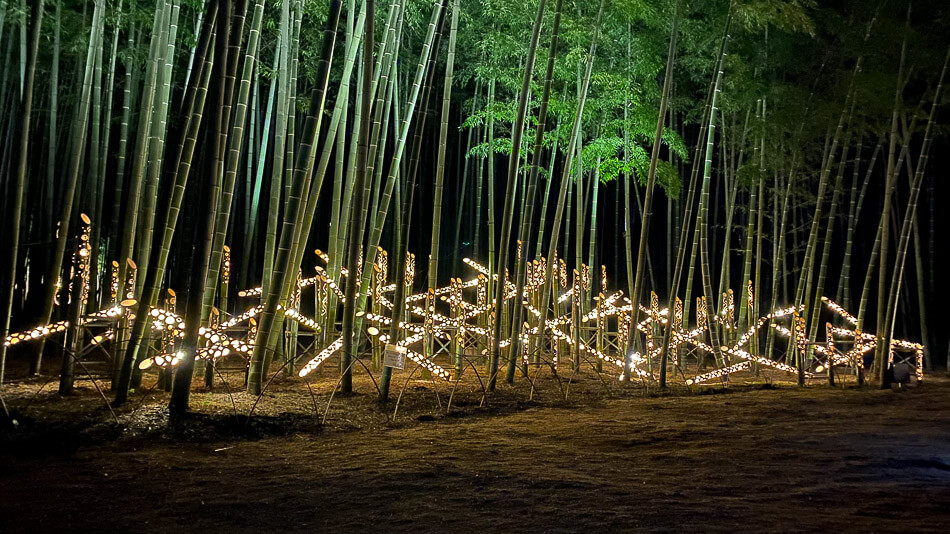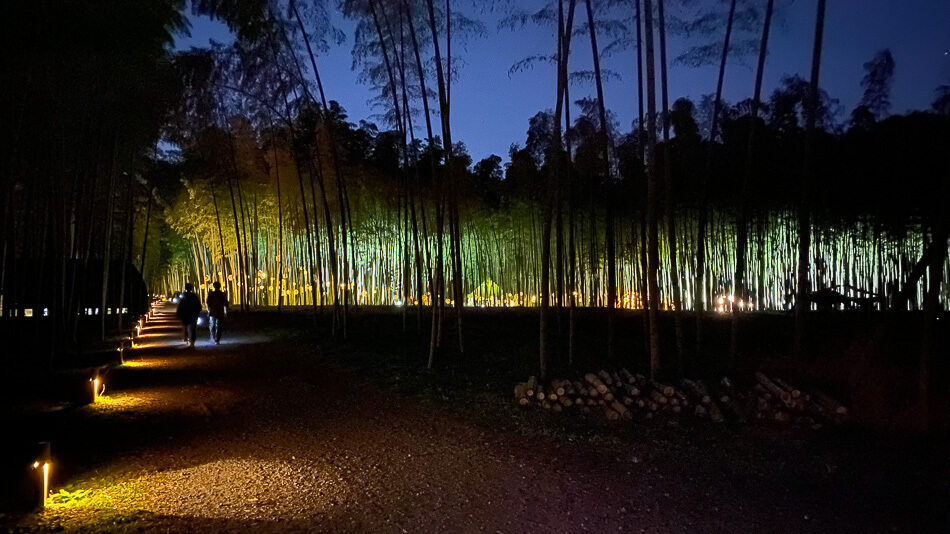
Have you heard of bamboo forest in Arashiyama, Kyoto? If you’ve ever considered a trip to Kyoto or have already had the pleasure of visiting this beautiful city, chances are you’ve heard of it. But did you know there is another bamboo forest worth visiting? It’s not so far from Tokyo and Nikko and as it’s less popular than the one in Kyoto, there are less crowds!
Note: I wrote this post in December 2023, so all information including entrance fee and opening hours are valid for autumn and fall season 2023/2024.
Where is the Four Seasons Bamboo Forest Wakayama Farm?
The name can be a bit misleading because Wakayama is a prefecture and a city in Japan, but this bamboo groove is not in Wakayama. It’s located in Utsunomiya in Tochigi prefecture and it’s relatively close to Tokyo and Nikko.
But there is a reason why it’s called Wakayama. The ancestors who settled in this land 350 years ago carried a family name Wakayama. Since then, the family devoted their time into cultivating not only bamboo shoots but also chestnuts. Over the years they’ve met with some difficulties especially when new plastic materials were introduced. There were plentiful well-kept bamboo forests, but a bamboo material became less in demand and thus those forests gradually disappeared. Nowadays, the ecotourism is becoming more popular which is only a good thing for places like this.

What can you do at Four Seasons Bamboo Forest Wakayama Farm?
Wakayama farm is one-of-a-kind in Japan as far as its size and scale. The bamboo grove spans 24 hectares of land and it’s bigger than Arashiyama’s bamboo forest. You can explore various bamboo species including their original cultivars and see the differences between them. Additionally, the farm features a chestnut and blueberry field, a café and a restaurant, and a tea house. The bamboo forest also serves as a captivating venue for events and has been chosen as a filming location for numerous movies.
Throughout the year, you can take part in various engaging activities:
- Night illuminations (available only on Saturdays, Sundays, and Holidays
- Bamboo shoot harvesting (April – May)
- Blueberry picking (July – August) and you can taste the blueberries while picking them. Sounds like a good deal, right?
- Bamboo crafts (creating a bamboo bow, a bamboo water gun, or a bamboo lantern), this is especially popular among children.
- Chilling in a hammock. You can hang a hammock between the bamboo stalks at any spot you like and just take your time and relax.
Bamboo Forest Illumination and Winter Illumination
In addition to the regular daytime visit, you can participate in night illuminations. These enchanting events take place year-round, specifically on Saturdays, Sundays, and holidays. With an exception from 30th December to 4th January, when it’s closed. The illuminations start at sunset and continue until 8:00 PM (in June, July, and August till 9:00 PM).
During winter there is a special winter light illumination. This time it’s from 18th November to 25th February. Also starting at sunset (they do not specify when exactly, but I guess around 17:00) till 8:00 PM. I am not sure in what way are these winter illuminations different but, on their website, they say there are more spots to see, and the forest is open on Friday, too.
I went to the bamboo forest after the sunset, it was quite late, around 7:00 PM so it was dark. But you will get a lovely lantern on a wooden stick so you can light your way. At night times the café and the restaurant are closed. You can only get a matcha tea in the bamboo grove. At the entrance, there is a small two-storey museum showcasing the history of the farm and some bamboo crafts. During the night illumination not every part of the forest is accessible. There is a designated route with illuminated spots.
How much is the entrance fee for night illumination?
For adults, it’s the basic entrance fee 750 yen plus additional light-up charge 750 yen, so 1500 yen in total. But I strongly recommend going for the combined ticket with a matcha tea and a small, sweet treat. It’s only 300 yen more and trust me you won’t get a matcha tea with a sweet for 300 yen anywhere. Plus, you will enjoy the matcha in a bamboo cup in the middle of the bamboo forest under a huge tent. Plus, if you decide later that you’d like to have the tea, you can, but it will cost you 750 yen. Plus, you can take the bamboo cup home. And it’s a real bamboo, not some plastic imitation. I think I don’t need to convince you any further. But be aware that the tea is served only on Saturdays and Sundays, not on Friday.
How to get to Four Seasons Bamboo Forest?
Compared to Arashiyama’s bamboo forest, accessing this one may be slightly more challenging, but not by much. Located in Utsunomiya, if you’re planning to visit Nikko, chances are you’ll have a layover in Utsunomiya to change trains. This makes it convenient to take a detour to explore the bamboo forest either on your way to Nikko or after your visit.
Going from Tokyo
- From Tokyo’s Ueno station, it takes 40 minutes to Utsunomiya JR station by train (by Tohoku shinkansen or Yamagata shinkansen).
- Bear in mind, if you go from Shibuya or Shinjuku, it will take longer.
- From Utsunomiya JR station, take a bus number 52, 56 or 58 to Nozawadera bus stop (野沢寺前)and then it’s a 9-minute walk to the bamboo grove.
Interested to discover more about Japanese cooking and culture? Let’s keep in touch on Instagram, Facebook, and Pinterest.
Sharing is caring:






